Waste Not - Kitchen Edition
Published April 10, 2020 by Sheila Anne MurrayWaste Not is a blog series dedicated to methods proven to reduce waste, increase simplicity, and live happier. This is not — I repeat this is not — a list of things that you need to do. You don’t need to toss everything you own and start fresh (that would, in fact, defeat the purpose of wasting less). The purpose of the posts in this series is to provide education on alternatives to wastefulness, as well as an invitation to take a second look at the things you are doing and consuming. We’ll ask questions like:
- How can this be done better?
- Does this product come in a non-plastic form?
- How can I decrease my footprint in this area of my life?
I’ve been so eager to write a blog like this, not only because the environmental warrior is screaming within me, but also because I’ve found that reducing waste and increasing simplicity in my daily life has brought me a greater sense of joy and purpose. I hope it might for you, too.
And now, without further ado, on to the first post — Waste Not: Kitchen Edition.
Ahhh, the Kitchen — The place that I spend 40% of my day in; the birthplace of the world’s greatest consumable creations; the area that everyone at a party gathers no matter how much you dress up the house. This is a great place to start our adventure, as it is the heart of the home.
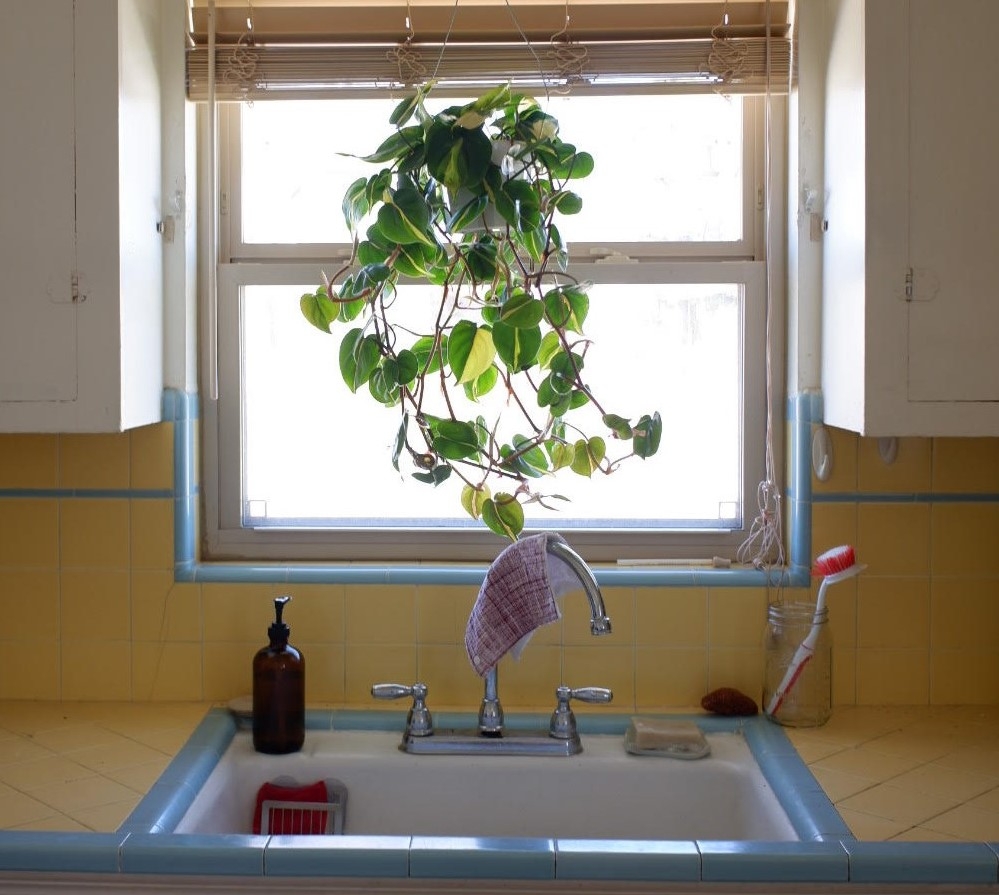
I will share some bits of our kitchen, and lifestyle within it, that help us reduce waste & live better daily. I have also compiled a list of resources at the end of the page that you can peruse through and even order from. I am constantly learning about new companies and sites to learn from. Please contact me if you know of more helpful resources that should be listed!
Coffee
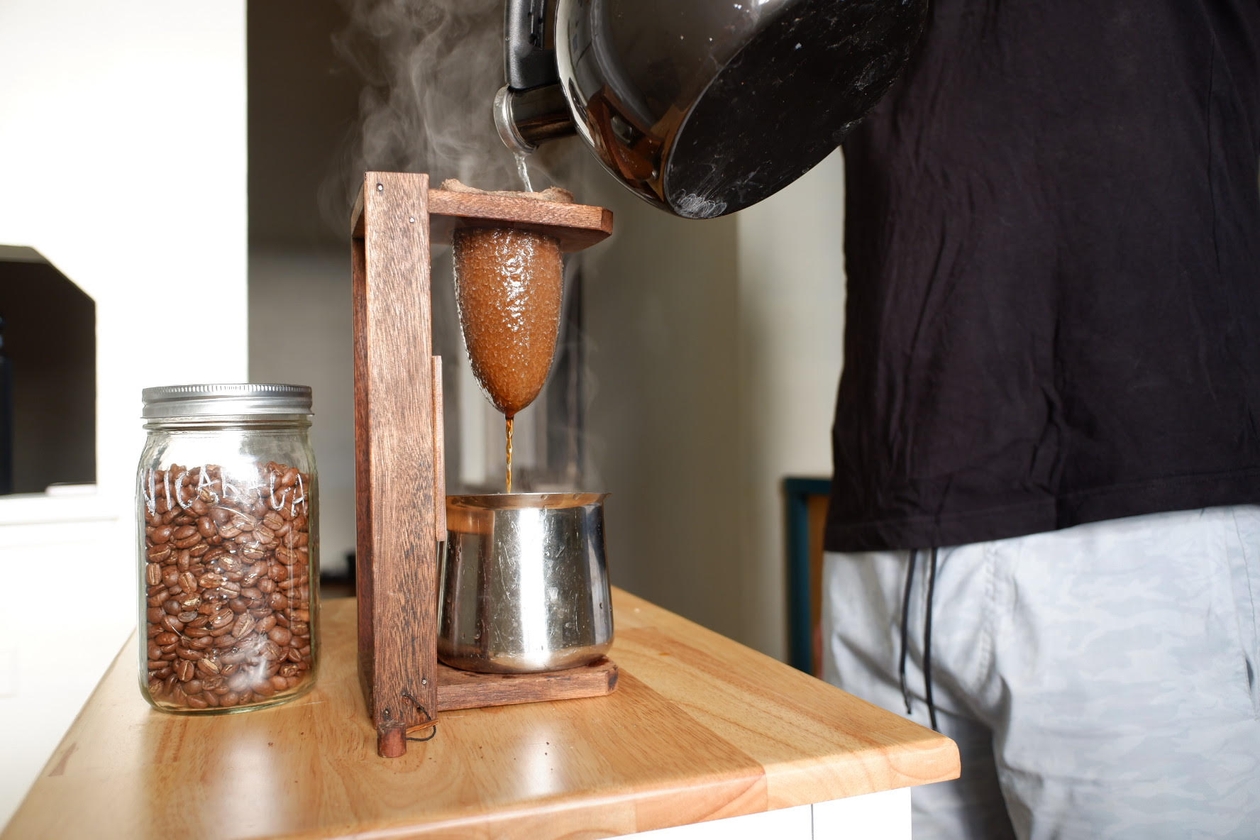
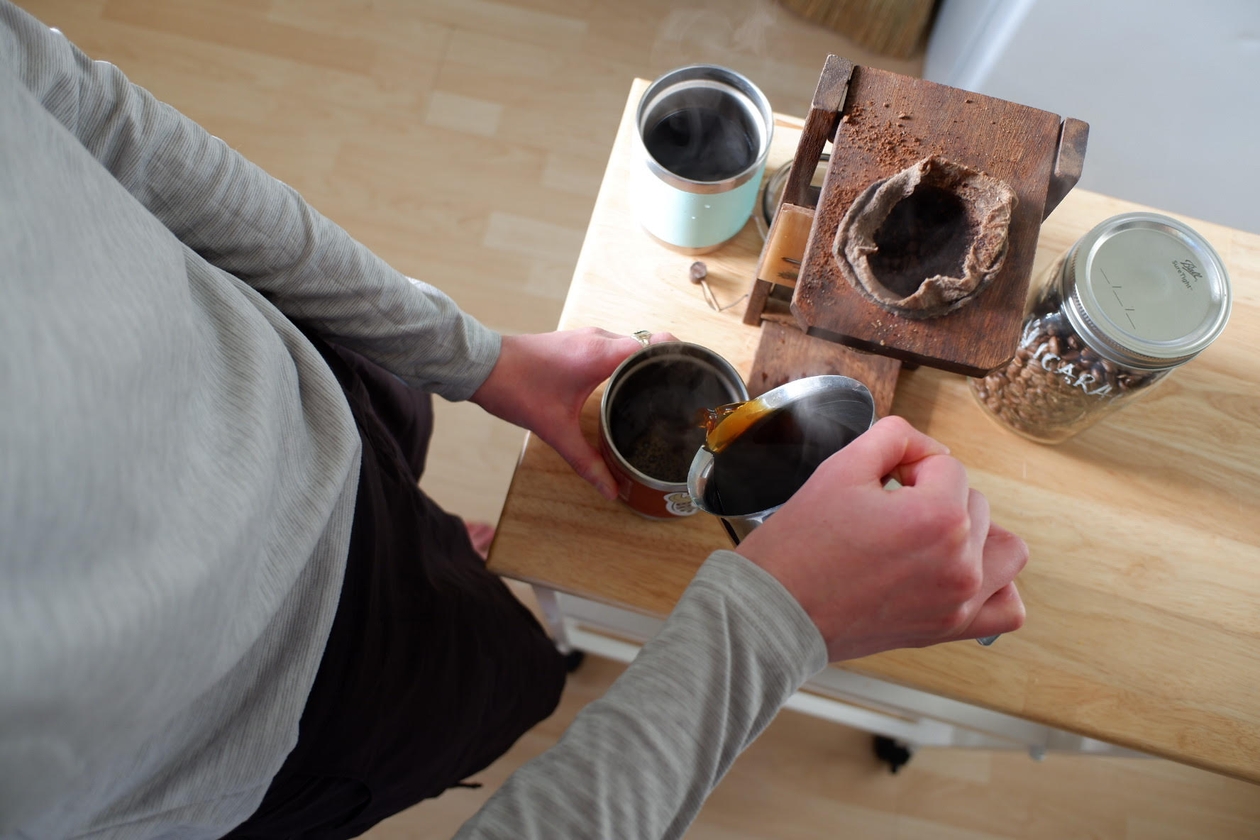
What’s your coffee-making method? Do you produce any waste with the materials you use? If you’re making coffee on a daily basis, consider how you might decrease the daily footprint of your process. Of course, leaning away from disposable to-go cups and single-serve pods like those from Nespresso & Keurig is a great first step! Next, you’d want to:
- Consider your brew method. Manual brewing almost always requires less equipment and the pieces are built to last, versus the sadly temporary nature of plastic coffee machines/ pots.
- Take a look at the kind of coffee filter you’re using. We brew our coffee the Costa Rican way, using a chorreador, and have a reusable cotton coffee sock. Coffee Sock is an amazing company producing sustainably made organic cotton coffee socks.
- Buy in bulk. We like to then store a smaller amount of beans on hand in a glass jar with the type (ie. “Nicaragua”) scrolled on it.
- Consider where your beans are coming from. Not all roasters are equal in their care for sourcing & practices. Check out what your local roasters are doing to reduce, reuse, and recycle, as well as the ethical & sustainable standards the company has in sourcing. No local roasters? No biggie, just research your fave company and see what they’re doing to reduce their footprint. Typically this will be pretty easy to find on their website if it’s something they care about. Another (high commitment) option — start your own roasting business 😎
Don’t be too quick to toss those grounds out, either! There are loads of ways to reuse your coffee grounds.
Tea drinker? Many of these tips & tricks still work! If you use tea bags, see if you are able to compost them. Consider buying tea in bulk and using a reusable infuser. Find out where your tea is coming from and what the company’s standards are.
Bye-Bye Parchment Paper & Foil Needs
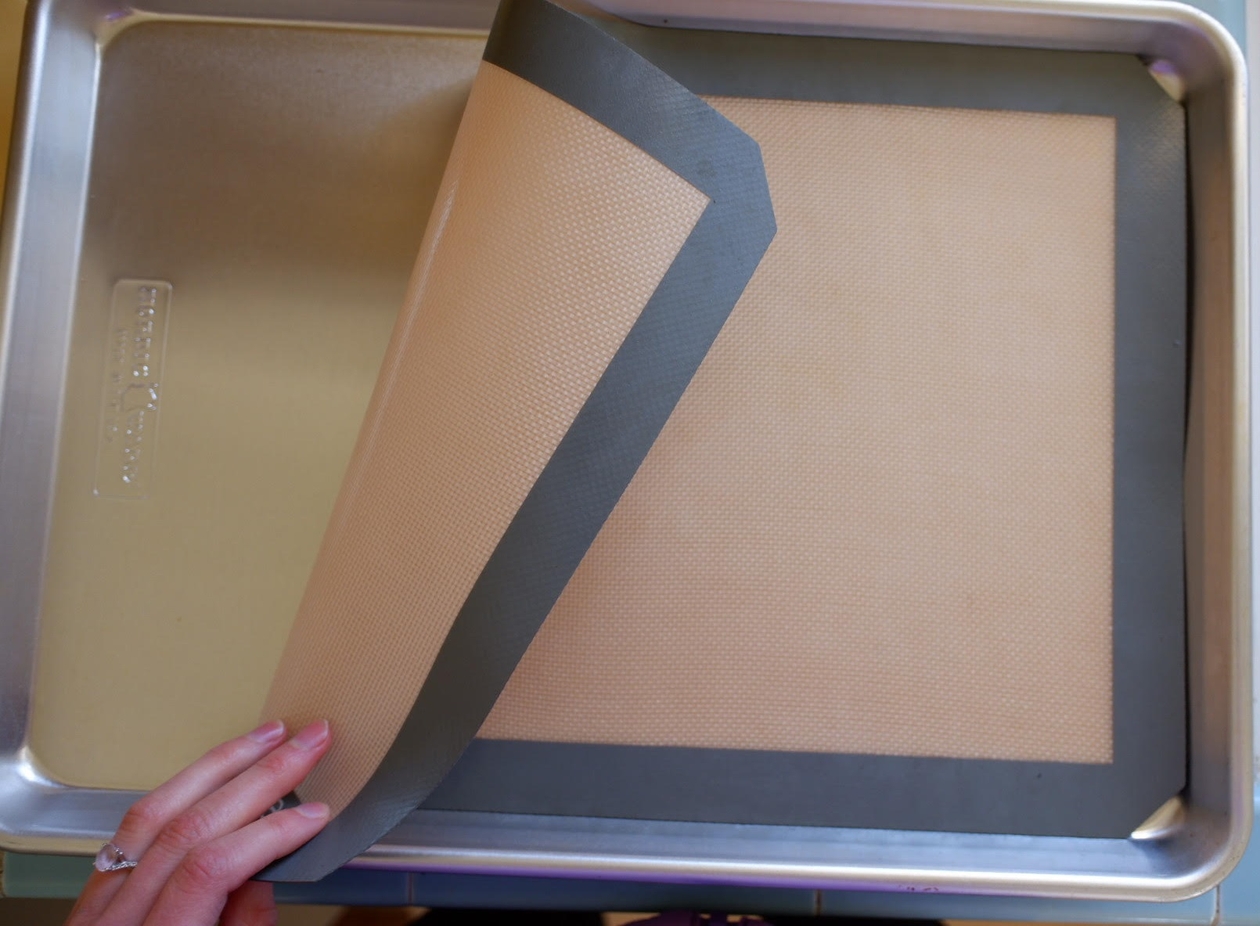
I’ve always had a hard time using disposable parchment paper and aluminum foil, but soaking & intensely scrubbing down a baking sheet doesn’t feel quite right either. This past year, my sister introduced me to silicone baking mats. Silicone baking mats are flexible, non-stick, non-toxic, can withstand very high heat, and also do well in the freezer.
Thus far I haven’t had any issues using these mats. They are perfect for roasting veggies and are super easy to clean. It feels good to have the ease of a non-stick surface without the health risks aluminum foil poses or adding to the trash bin. You also don’t need to shop at a fancy shop to get your hands on them — they’re available in the Baking aisle of most home-goods stores.
Glass Bottles
Glass Oil Bottles
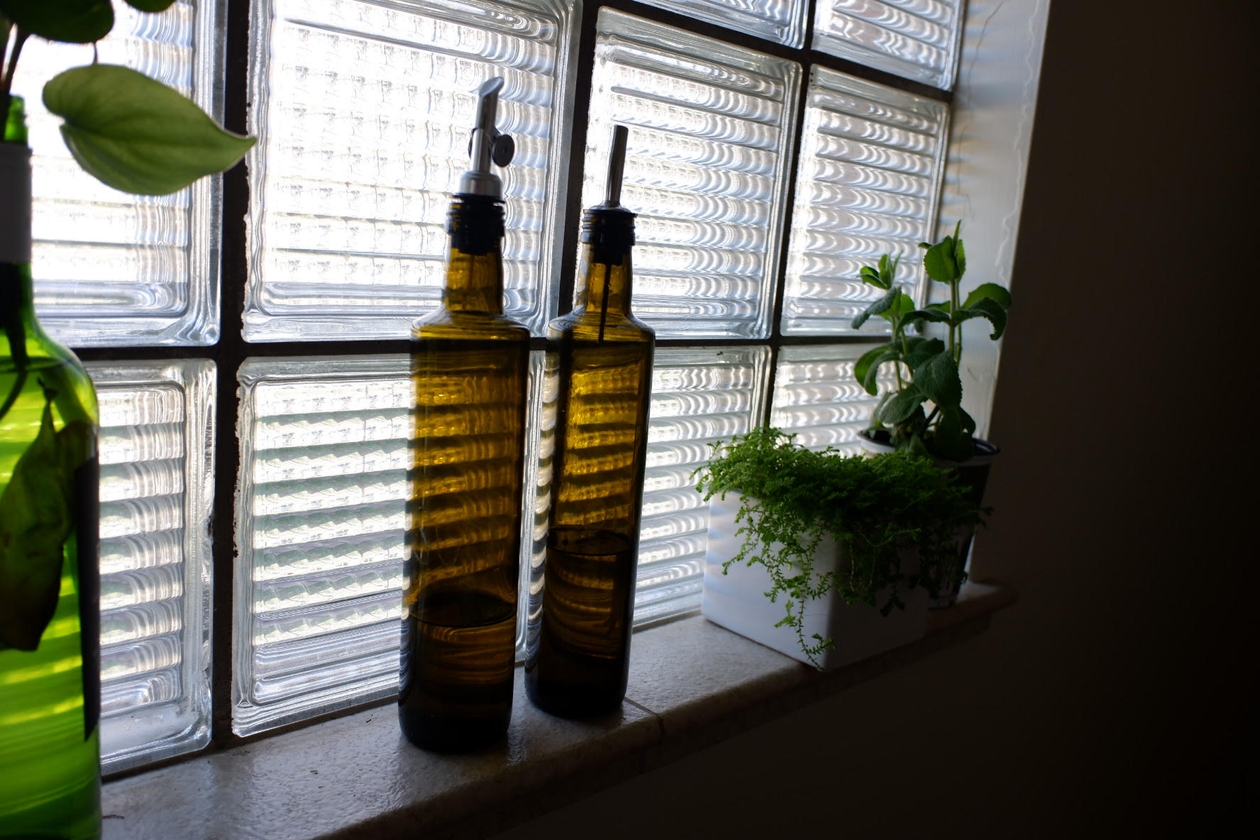
This is the first time that I’ve gotten a refillable glass oil bottle and I’m (hopefully) never looking back. We are lucky to have a place called Zero Market just down the street, where we bought a variety of bottles (oil, soap, spray) and were able to fill them up right in-house. They sell just about everything you could imagine needing in bulk and have big barrels of things like dish soap, various cooking oils, and vinegars. We bought sunflower oil and olive oil and labeled them using a white glass marker.
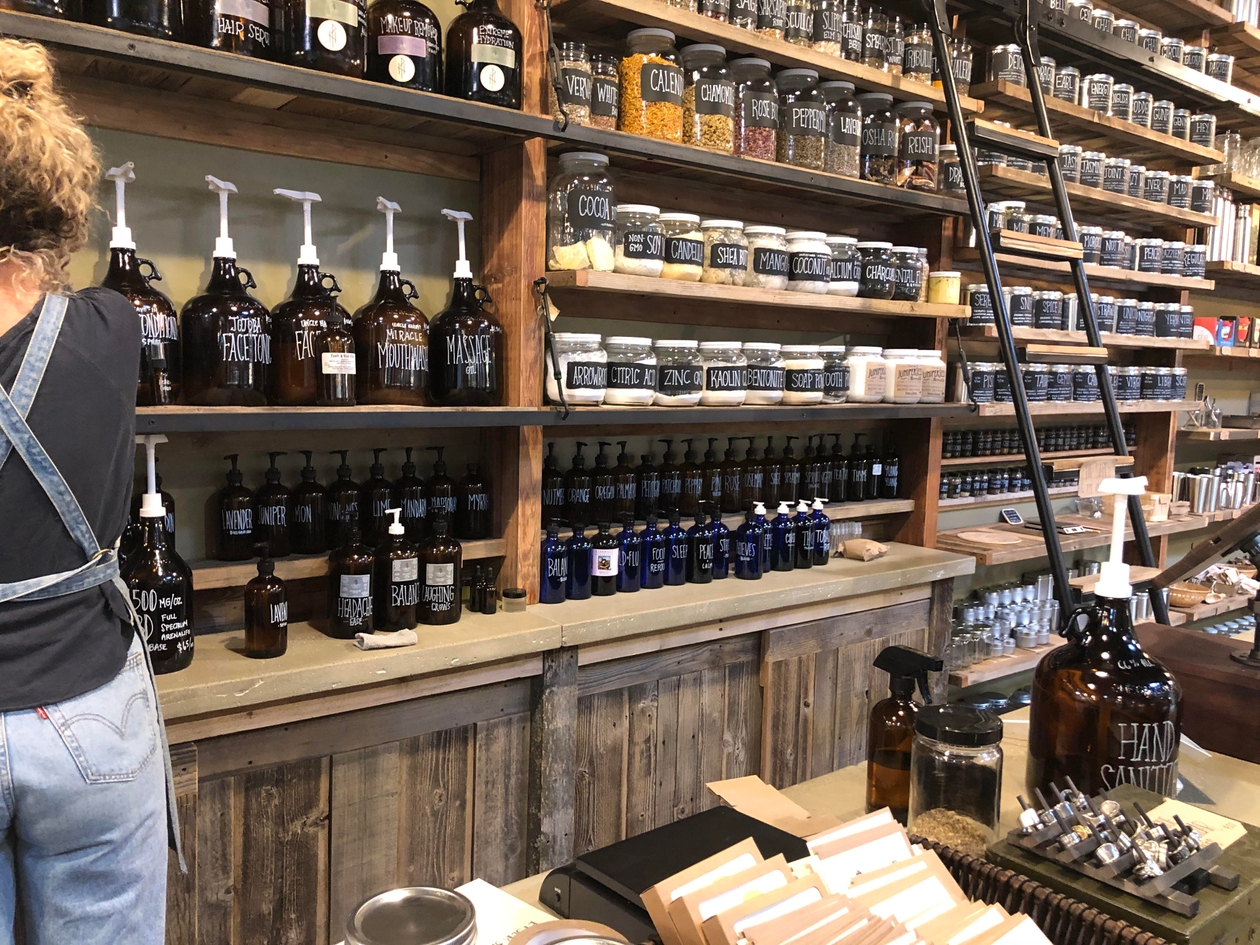
A photo of the big bulk wall at Zero Waste in Edgewater, CO
Don’t have a bulk shop around? Buying in glass is the next best option, as it’s easier to reuse or recycle.
Glass Refridgerated Storage
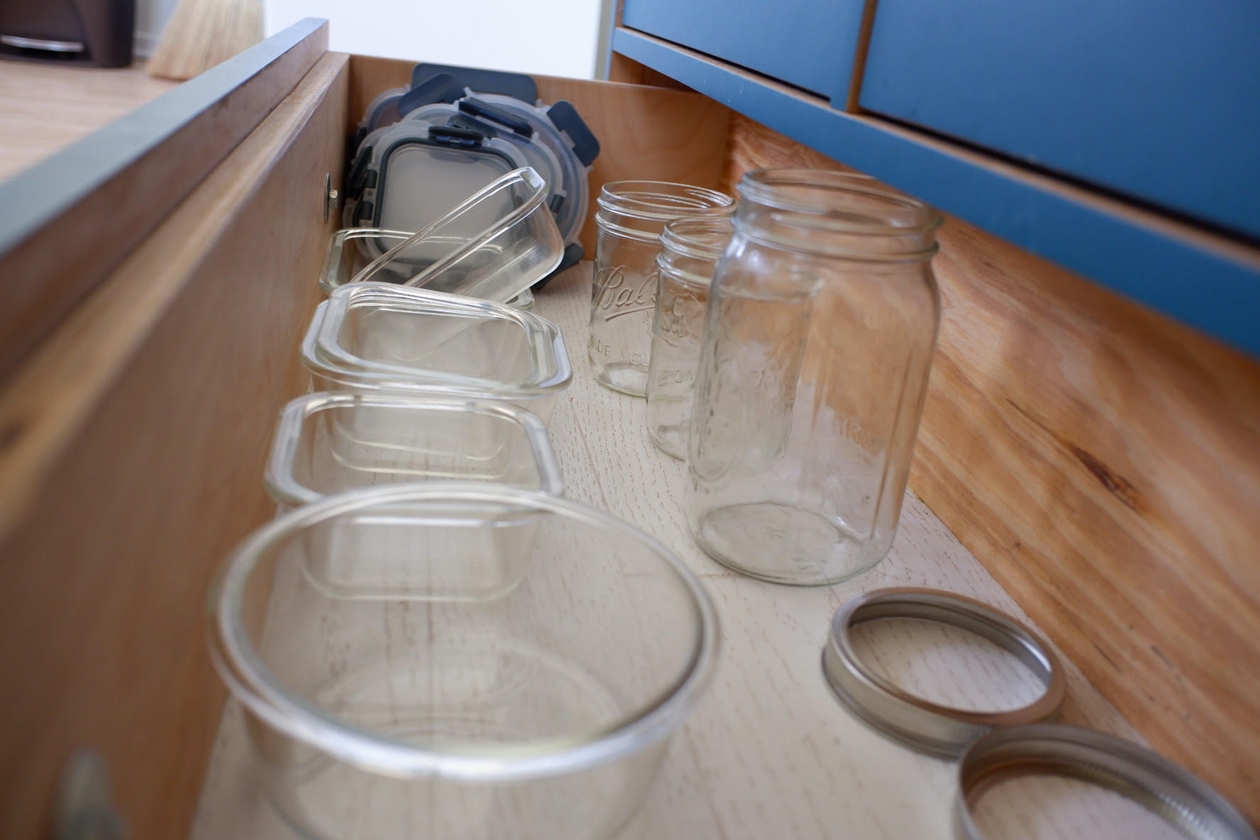
When I first discovered that glass tupperware was a thing, it blew my mind 🤯 Wait, you mean I don’t need to store leftovers in containers that are hard to clean, fall apart over time and may be leaching chemicals/endocrine disruptors into my food!?
Not only does glass tupperware rock because it’s non-toxic, it’s also easier to clean and you can reheat your leftovers right in it — Cutting out the cumbersome task of transferring plastic-kept food to a microwave safe bowl.
I have the more common glass tuppers with plastic snap-on tops but there are also non-plastic options that I’d love to upgrade to one day. If you want to really go top-shelf in the Waste Not mentality, I suggest looking into storage containers with stainless steel, wood, or glass.
Glass Dry Goods Storage
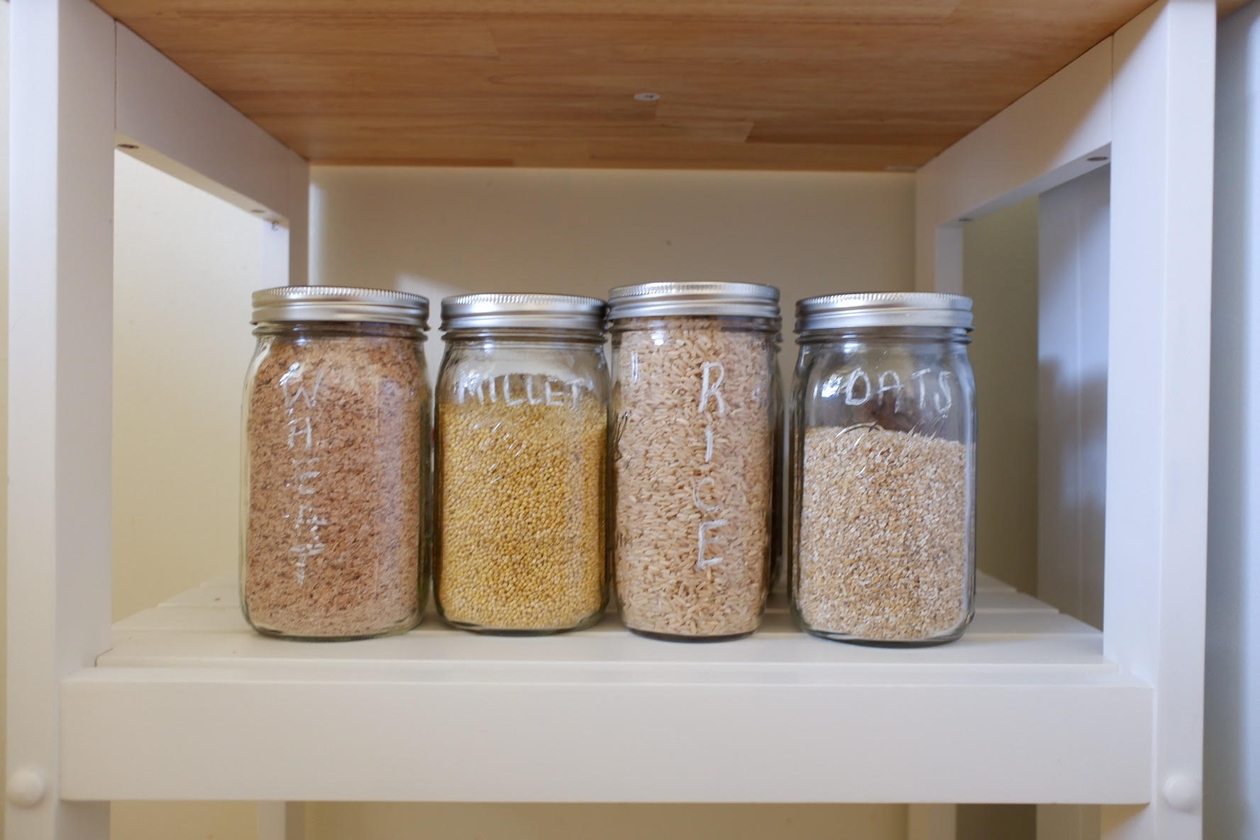
I’ve always adored the look of clear mason jars displaying their contents on a countertop or across a shelf. Being able to see the grains, in their varied sizes and shapes is aesthetically pleasing, and it makes it easier to grab what you need when you need it.
We buy our grains in bulk (saving on packaging & usually $ too) and then distribute them into our jars, labeling them with our white glass marker. In this way, we also have a better sense of where we are getting low. As we are vegetarians, bread bakers, and oats-or-buckwheat-for-breakfast-kinda-people, we go through grains pretty quickly, and it’s nice to have a variety to choose from in the case that we run low.
Another great thing about having jars in the home — Storage containers and drinking glasses are not mutually exclusive. In fact, being able to exchange the two really simplifies life!
Glass Water Bottles
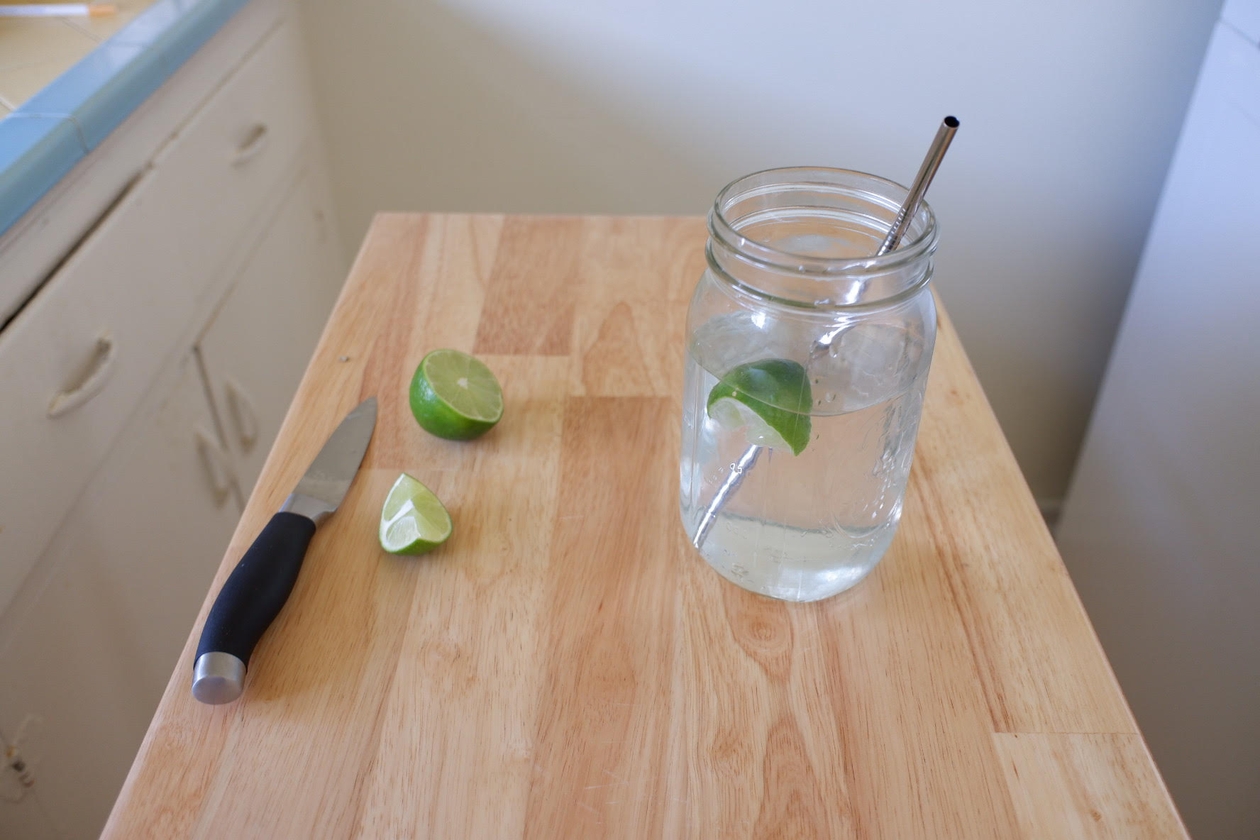
Though I typically have a big, reusable water bottle on hand, I love sipping out of a large clear glass. In the afternoons I’ll make myself up a elixir of water with lime and sometimes will toss in apple cider vinegar or a splash of seltzer if I’m feeling fancy. Perhaps it seems silly, but taking a little time & thoughtfulness brings joy to my day. Self care doesn’t need to be anything grand or expensive, it can also be adding some citrus to your water or drinking tea out of your favorite mug.
Stainless Steel Straws
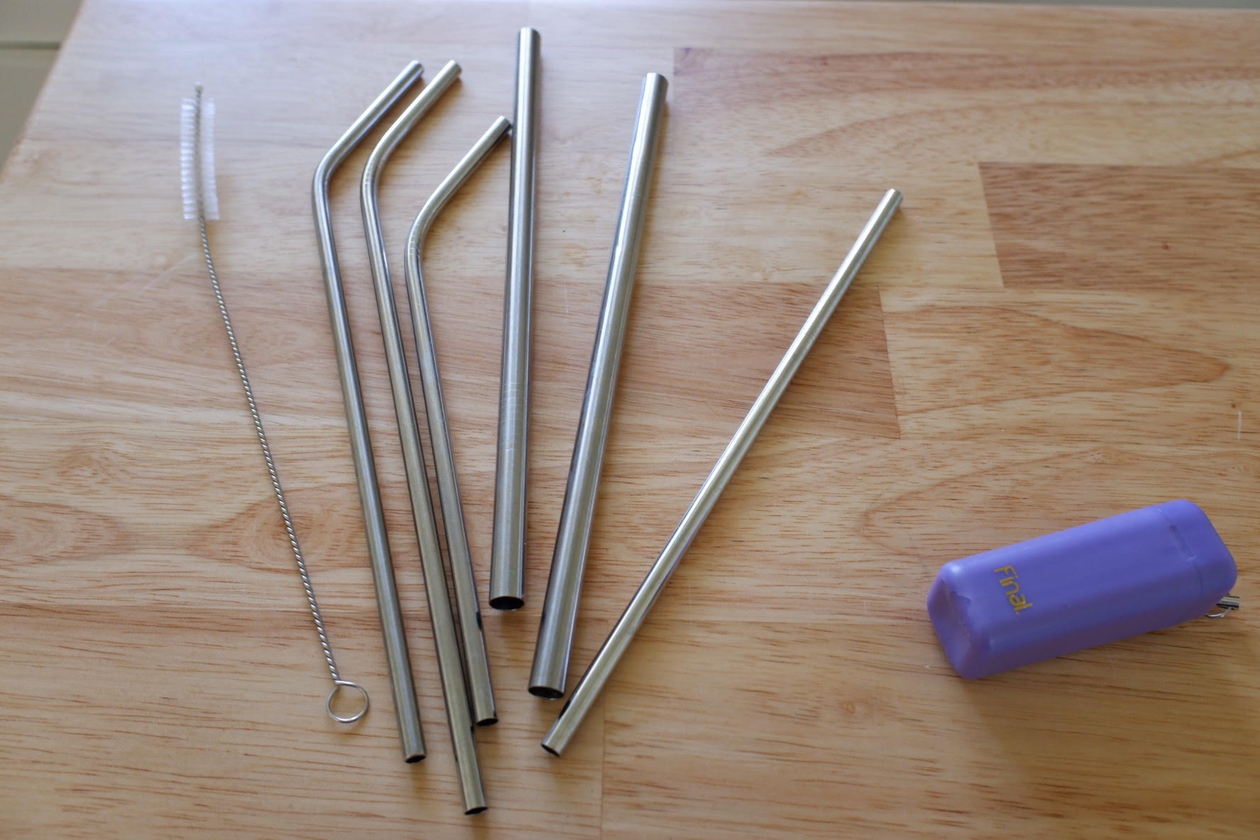
I started carrying stainless steel straws a couple of years ago. My mom gifted me with a few straws that came in a cloth bag and I brought that bag with me on errands, weekend trips, and I kept one with me at my work desk. I remember one instance that I went to visit a dear friend of mine in New York City. At some point when we were walking the city, I was shuffling through my bag and pulled out the bag of straws. She and her friend had apparently never seen metal straws and, of course, had never seen someone pull them out of a purse. I told them that I carried them everywhere, just in case! They were unsure.
Our next stop was a coffee shop and we each ordered an iced coffee. The barista told us they didn’t have straws… but that we could buy one for $2 each. What timing! I pulled out my bag of straws once again and gave us each a straw. When I departed back to Boston, I left my friend with her own reusable straw as well as a straw cleaner!
If carrying around straws like these seems cumbersome, by all means keep them at home! Another option is to look into something like FinalStraw, which travels nicely.
Cloth Napkins
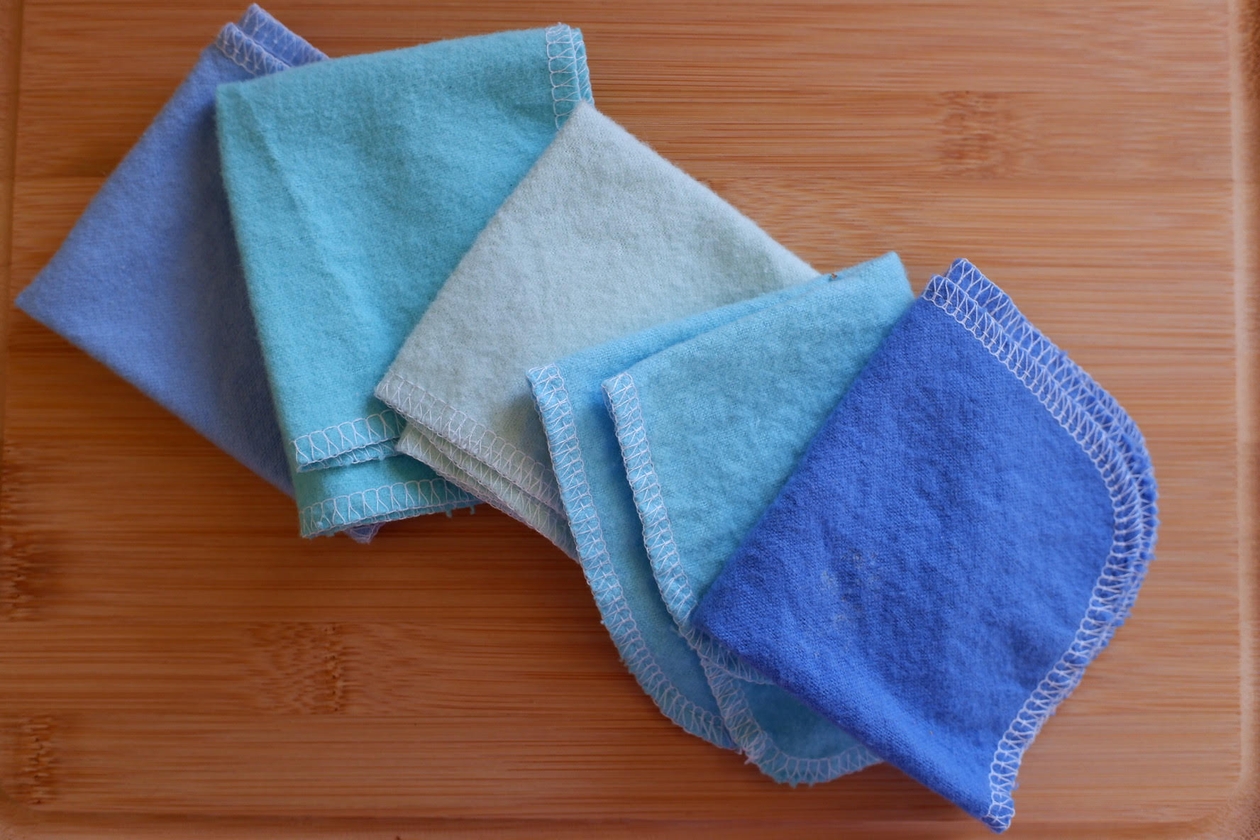
Reusable napkins don’t need to be the fancy ones you take out for holidays and celebrations —These cloth napkins from Marley’s Monsters do the trick. They are 100% cotton flannel and come in a variety of colors… also, if you’re a crafty I’m sure they could be easy peasy to DIY 😎.
Unpaper Towels
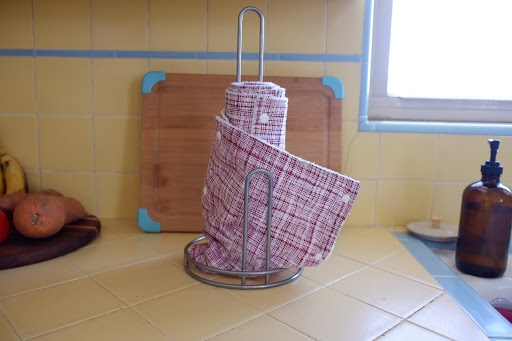
These snap-together towels can easily fit into your lifestyle, as they easily fit right onto a traditional paper towel holder 😉. They are machine-washable and we’ve never come close to running low. We also have unpaper towels from Marley’s Monsters that I keep stored in a drawer and probably use more often, for drying dishes, cleaning countertops, etc.
Beeswax Wraps
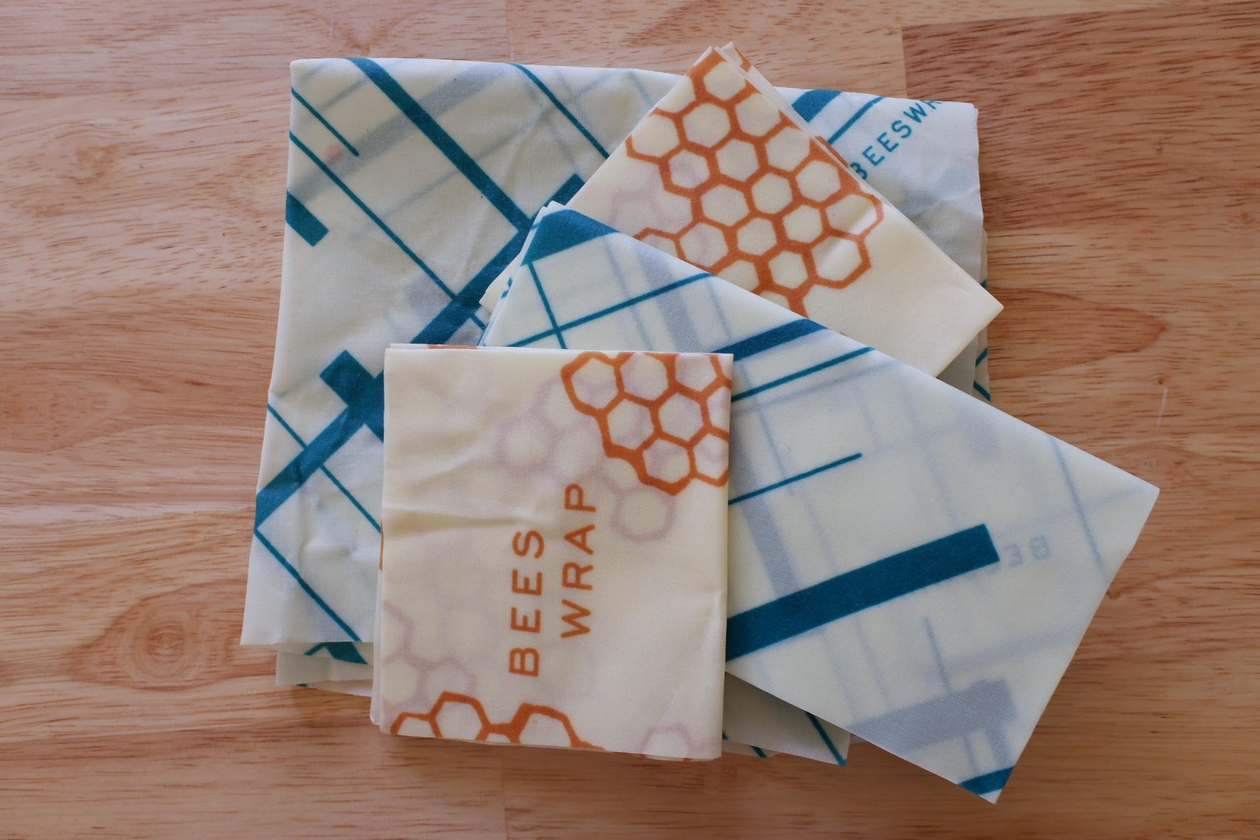
It’s likely you’ve heard of beeswax wrap before, they’ve really hit it big over the past few years. As a stellar alternative to plastic wrap, I find it handy to wrap anything from the latest sourdough bread loaf to on-the-go eats like these muffins.
If you want to go top-shelf in the Waste Not mentality, I suggest making your own! Either way, don’t toss the wraps if they get worn, you can revive them on your own!
Waste Not In The Fridge
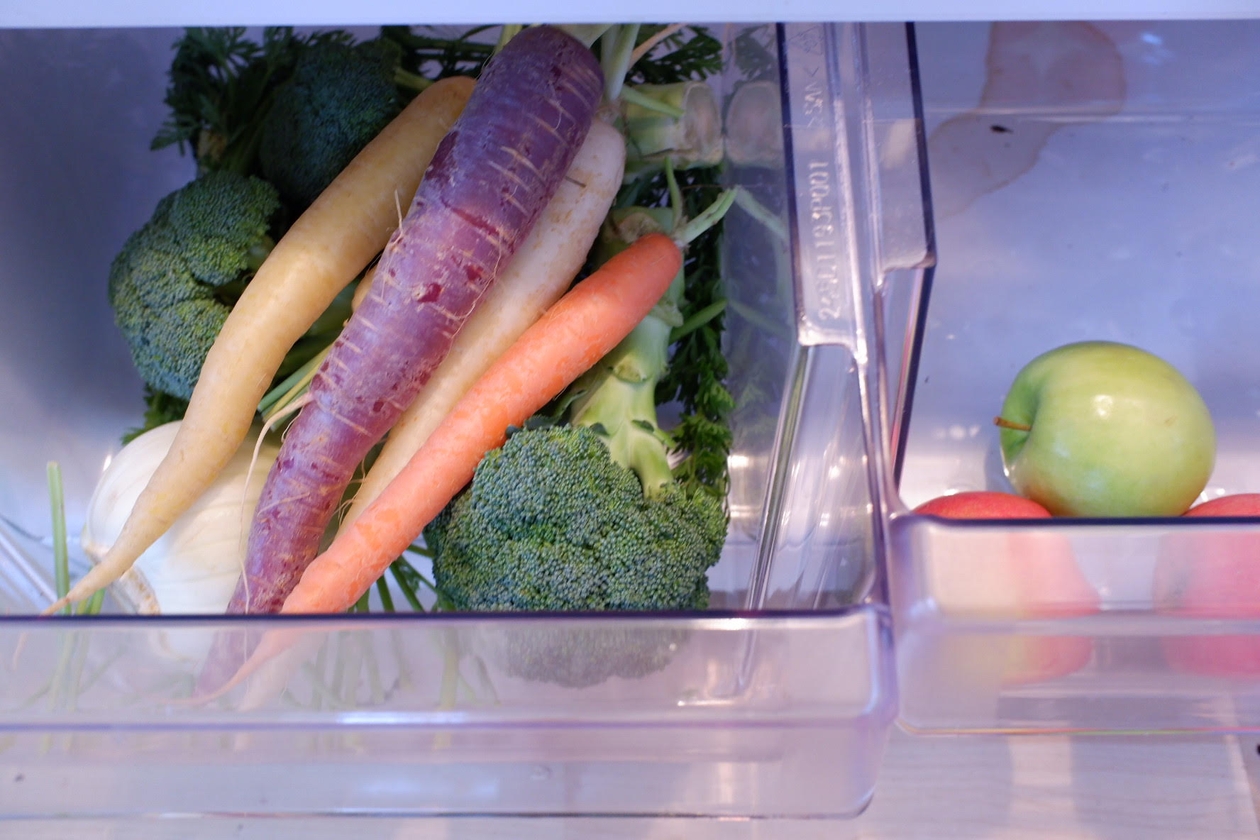
Fruits and vegetables can be happy free of plastic bags in a crisper drawer! I’ve recently built the habit of washing all of my produce with natural soap right when I come back from the grocery store. I fill a big bowl up with water, toss as many fruits/veggies as I can fit, and swirl in some soap (I get mine from our local Zero Market). Greens get washed, then I place them in a towel in the fridge. Potatoes, winter squash, onions, and others in this category stay in cool well ventilated areas.
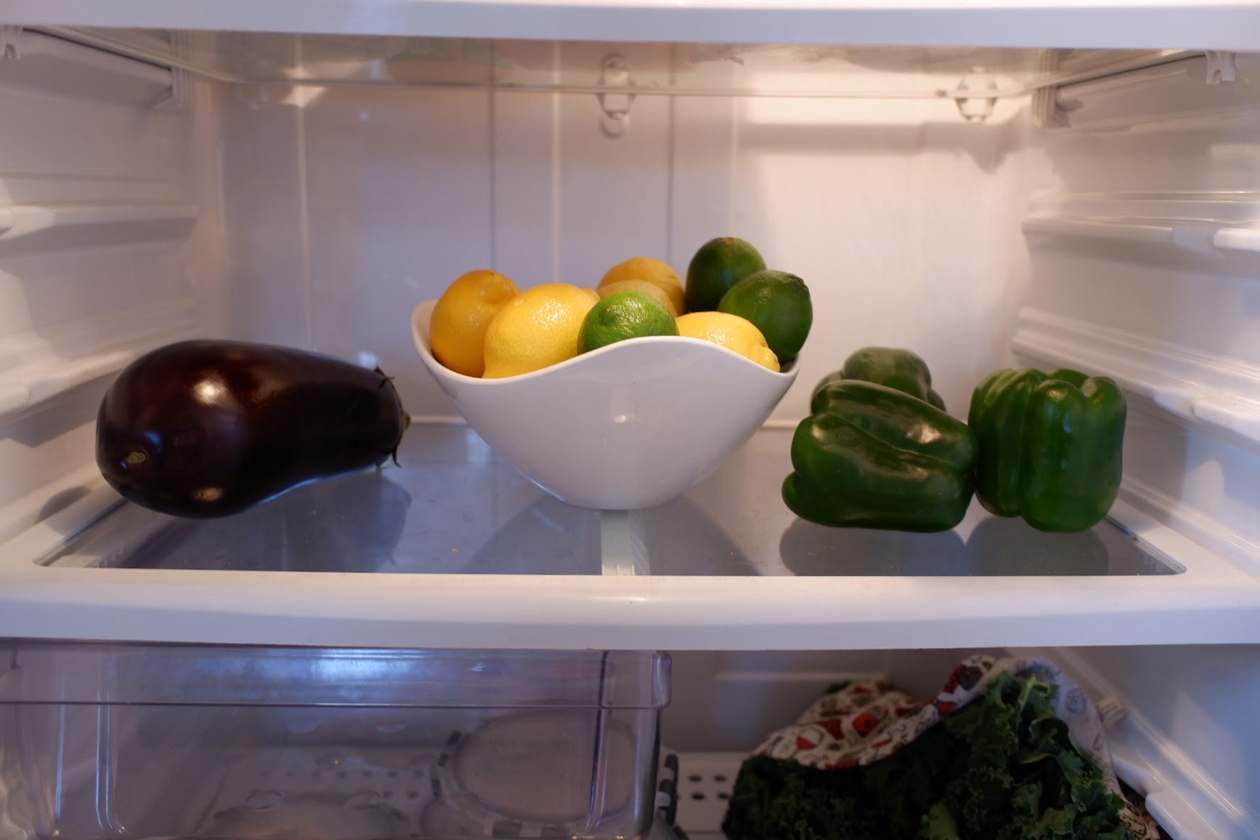
I love having pre-washed citrus in a nice big bowl. Since I use lemons & limes so frequently, it’s nice to be able to just grab them as-needed.
Though I don’t currently have any fragile greens (parsley, spinach, coriander, etc.), they are best kept upright in the refrigerator, wrapped in a moist cloth or sitting in a jar with a little water. You really don’t need to be this picky — it depends how much you care about your produce and the time you have to dedicate. For me, it’s fun to learn new ways of doing habitual things! Ever since making the change, I question why I ever bought & kept my produce in bags in the first place; this is so much better!
Cast Iron Magic
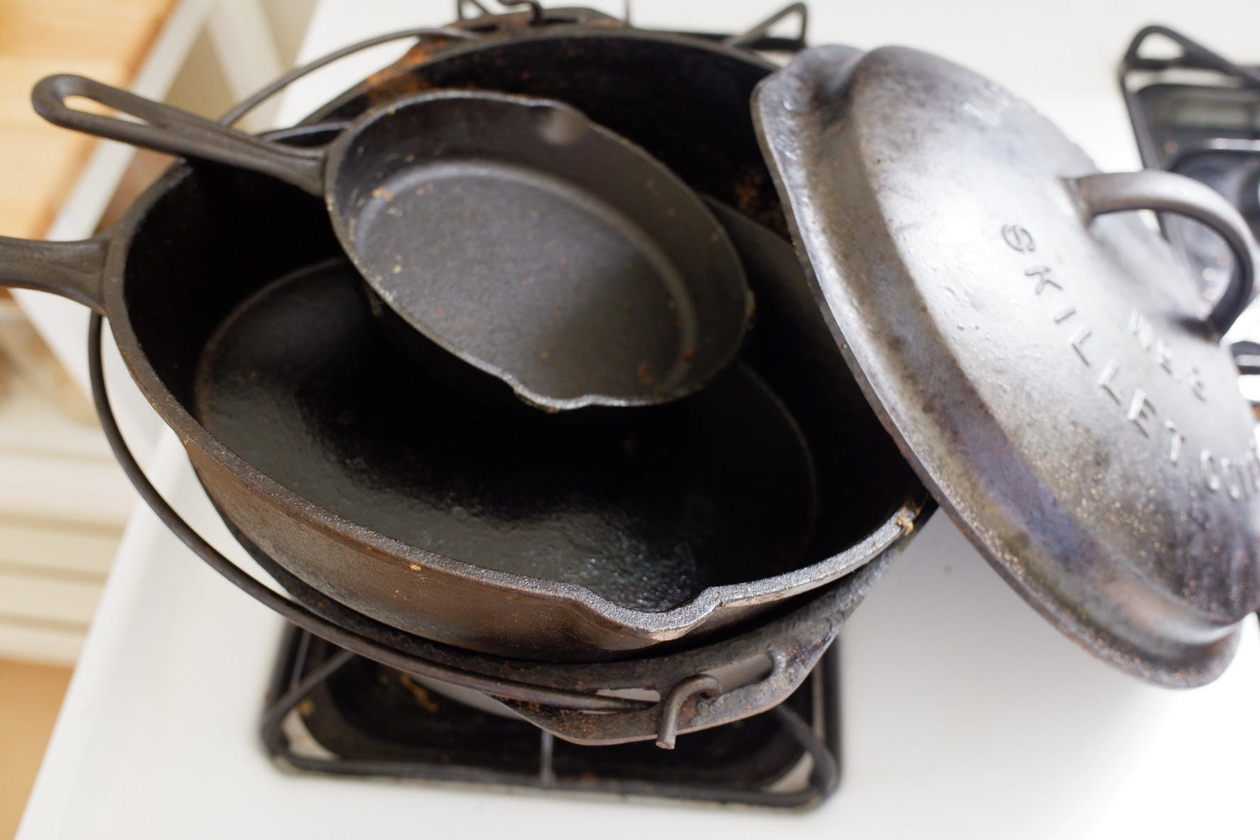
We cook almost exclusively with cast iron. I used to just use it for dishes here and there but ever since moving and paring-down on home needs, I realized how crazy versatile they can be. Cooking rice in cast iron? Why not! Baked ziti? Heck yea! Omletes? Not so scary anymore!
The key is seasoning your cast iron properly and that involves finding the right oil for the job. You can find a hundred blogs out there recommending which oil is best for seasoning your cast iron; the moral of the story is that anything with a high burn point will likely work well. Just remember that using soap to clean a cast iron is a no-no! Lightly wipe down with a reusable towel (or your hand) and hot water; burn off the excess water back on your stovetop and lightly re-oil between uses.
Cast irons are non-stick, chemical free, have a long life span (I use my grandmother’s dutch oven!), add iron to your food, and can be used in the oven or on the stove to make your world simpler!
Wooden Dish Rack
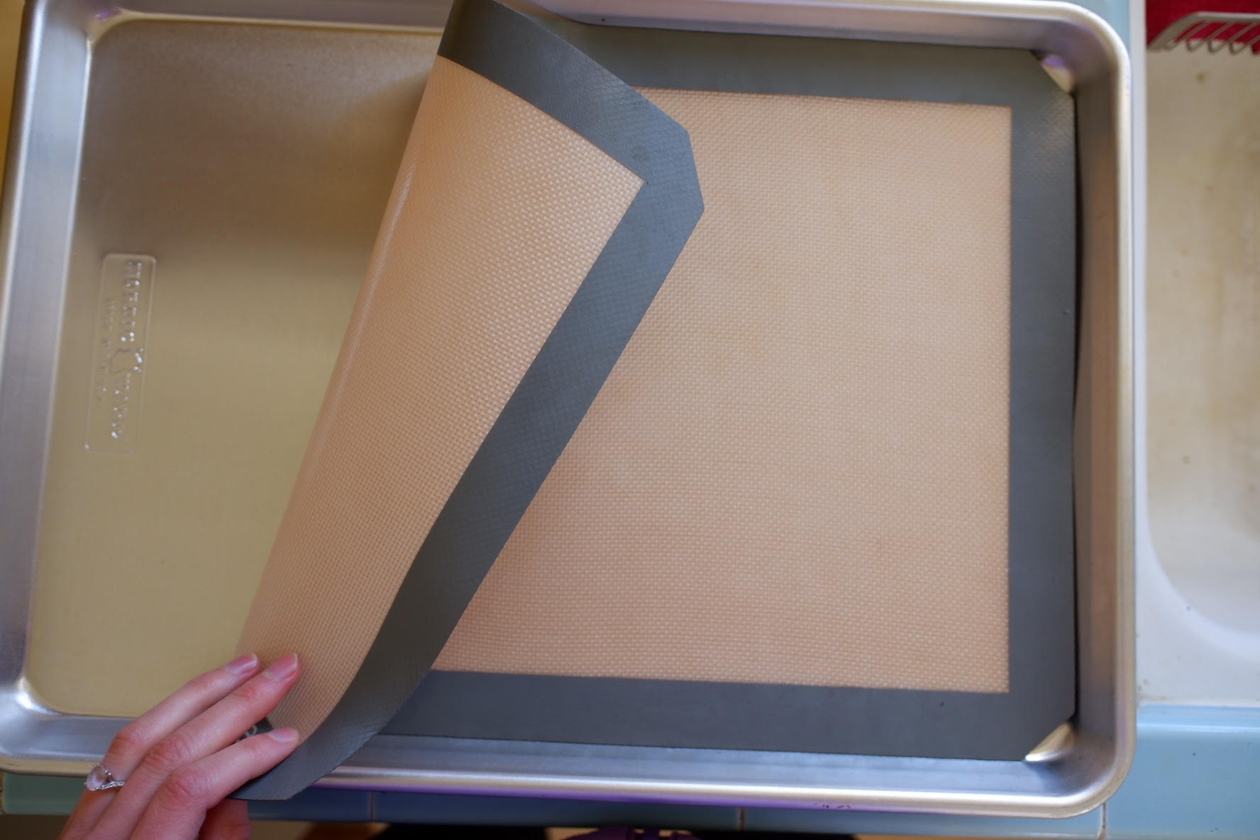
Welp, finding an apartment with a dishwasher was a priority, but we accidentally forgot to ask about it when we found this place. I was so excited about the price, location, and amount of light that I think I just spaced out the whole tour. So, we wash our dishes by hand and it’s been fine. One thing we wanted to be particular about in our dishwashing-by-hand life was finding a drying rack that was plastic-free and minimalist.
This bamboo drying rack and washable fabric mat fit the bill and didn’t break the bank (I can’t believe how much I’ve paid for previous drying racks). It also folds up nicely so that, when we’re not using it, we have the counter space freed up!
Wrapping Up & Resources
I hope you enjoyed Waste Not: Kitchen Edition. Perhaps it even got some new wheels turning in your head and you have insights to share! I did not make all these changes overnight and I don’t recommend that you do either. Simply bringing more curiosity to my daily life and investigating products I use has brought about great insights and habit-changes. Have fun & be well!
Take a look at the below companies for further inspiration:
- Coffeesock.com — Organic cotton coffee socks, sustainably made and available in all shapes to serve your coffee preferences.
- Compost Now — Composting service for your home or office. See if they have availability where you live!
- Marley’s Monsters — Zero waste essentials for the various parts of your home & life.
- Package Free Shop — An online store that’s a catch-all for a variety of sustainable clothing & product brands. It helps you live better & greener, without the price tag$.
- The Good Fill — The Good Fill is a package-free shop based out of Nashville, TN that offers sustainable alternatives to items that we use & dispose of on a regular basis. You can order bulk items that arrive in refillable or returnable containers.
- The Zero Market — My favorite shop in the Denver area. During this time the market in Aurora is still offering curb-side pickup.